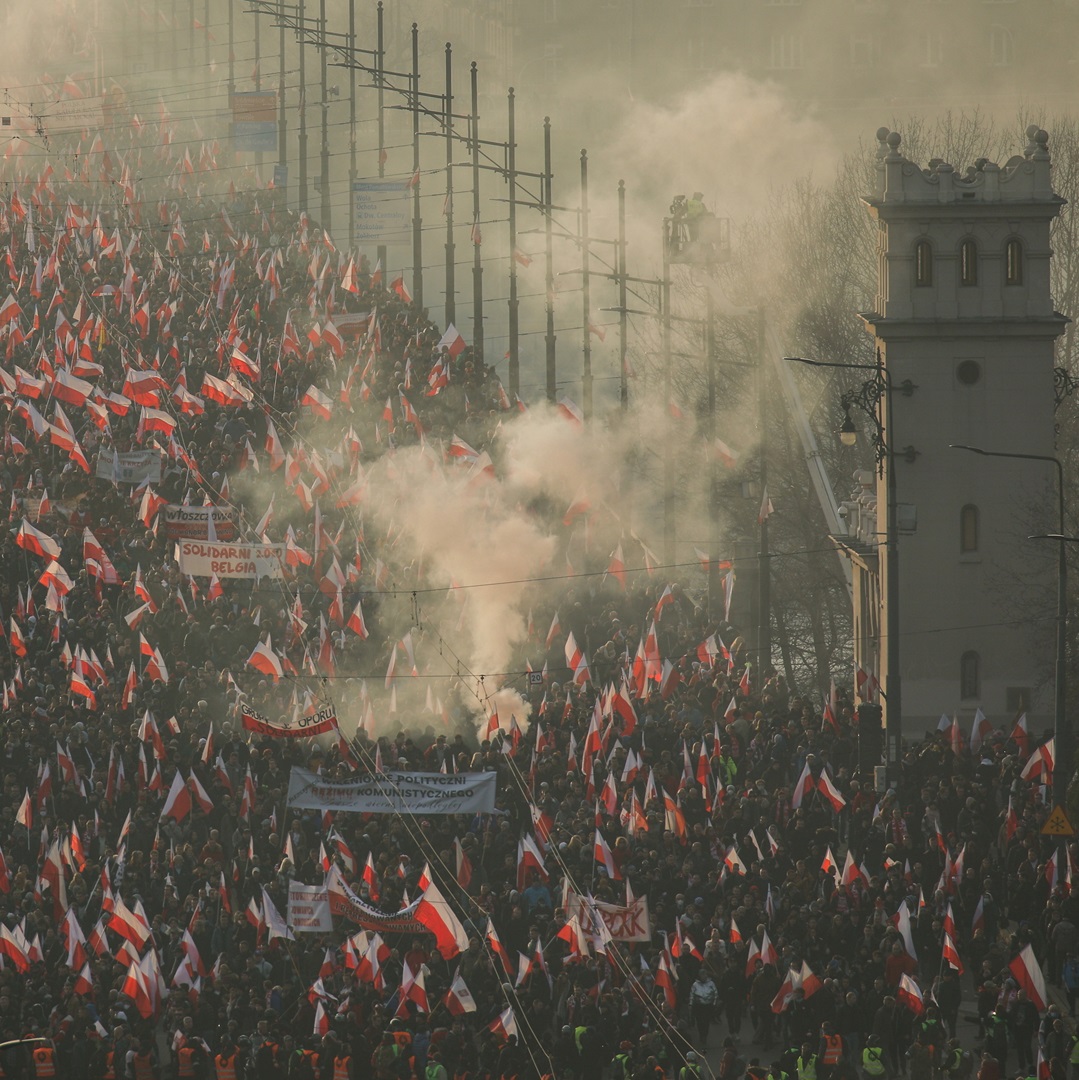As Poland celebrates its Independence Day, far-right groups stage rallies across the country.
In downtown Warsaw, tens of thousands of demonstrators started their march by lighting red flares and singing the national anthem.
WARSAW — Tens of thousands of nationalist marchers took to the streets of the capital on Thursday to commemorate Poland’s independence, warning that the country was under assault by Middle Eastern migrants trying to cross its eastern border with Belarus.
An event traditionally dominated by fury at Polish liberals instead focused on the migrant standoff, which European officials say has been orchestrated by the leader of Belarus.
In a speech at the start of the march, Robert Bakiewicz, the head of a nationalist group that organized the event, drew cheers and applause when he praised Polish soldiers, border guards and police officers at the frontier who he said were defending the nation.
“Poland is under attack,” he said. “Today it is the duty of every Polish patriot to support the state.”
In previous years, the march has been marked by violence and xenophobia; in 2017, right-wing demonstrators clashed with the police and chanted, “Pure Poland, white Poland,” and “Refugees, get out!” This year, organizers and the government seemed eager to avoid street fighting at a time of escalating international tensions.
Gathered in a sea of red and white Polish flags, demonstrators started their march by lighting red flares and singing the national anthem. A small group of young men trampled a rainbow flag outside a subway station, near stalls selling books denying the Holocaust and celebrating fascist leaders like Francisco Franco of Spain.
But while the crowd included burly young men who raised their arms in fascist-like salutes to chants of “Hail, Great Poland” and another group shouting “Border guards, open fire,” it also featured peaceable young couples pushing baby strollers.
“We are here to celebrate Polish independence. We just want to teach patriotism to our kids,” said Monika Arbaszewska, 38, a mother of two, who joined the rally with her husband, Szymon.
Nov. 11 is the anniversary of Poland regaining its sovereignty in 1918, more than a century after being swallowed by its neighbors. Commemorations are meant to evoke unity, but in recent years, they have more often served to underscore the divisions tearing at the nation.
In previous years, the march has been marked by violence and xenophobia; in 2017, right-wing demonstrators clashed with the police and chanted, “Pure Poland, white Poland,” and “Refugees, get out!” This year, organizers and the government seemed eager to avoid street fighting at a time of escalating international tensions.
Gathered in a sea of red and white Polish flags, demonstrators started their march by lighting red flares and singing the national anthem. A small group of young men trampled a rainbow flag outside a subway station, near stalls selling books denying the Holocaust and celebrating fascist leaders like Francisco Franco of Spain.
But while the crowd included burly young men who raised their arms in fascist-like salutes to chants of “Hail, Great Poland” and another group shouting “Border guards, open fire,” it also featured peaceable young couples pushing baby strollers.
“We are here to celebrate Polish independence. We just want to teach patriotism to our kids,” said Monika Arbaszewska, 38, a mother of two, who joined the rally with her husband, Szymon.
Nov. 11 is the anniversary of Poland regaining its sovereignty in 1918, more than a century after being swallowed by its neighbors. Commemorations are meant to evoke unity, but in recent years, they have more often served to underscore the divisions tearing at the nation.
This year’s march comes as thousands of migrants from the Middle East and elsewhere have gathered just over the border with Belarus, trying to make their way into Poland, an E.U. nation where anti-immigrant sentiment runs high.
Opponents of Poland’s right-wing government called off plans for their own Independence Day rally in the same place as the nationalist gathering, which had raised fears of clashes in the streets. Instead, they held a small counterdemonstration in another part of Warsaw under the slogan “Yes to Independence, No to Fascism.”
Polish leaders have used the border standoff to rally support in the E.U., casting Poland as its defender.
But the government’s rightward moves have put it bitterly at odds with the E.U. for years, over issues like judicial independence and L.G.B.T. rights, and those tensions persist.
Mr. Bakiewicz, in his speech, railed against what he called “internal collaborators,” declaring that “there is a war going on, not only the one on the border, but also the war with Germany and the European Union.” He denounced plans to cut carbon emissions as “green devilry” cooked up by ecologists and Germans to keep down Poland, a major coal producer.
One protester set fire to a picture of Donald Tusk, a former prime minister and top E.U. executive who is now Poland’s main opposition leader, and others paraded a banner showing St. George thrusting a sword through a dragon draped in the blue E.U. flag. As the sun set on a gloriously clear day, however, there were no reports of serious violence.

